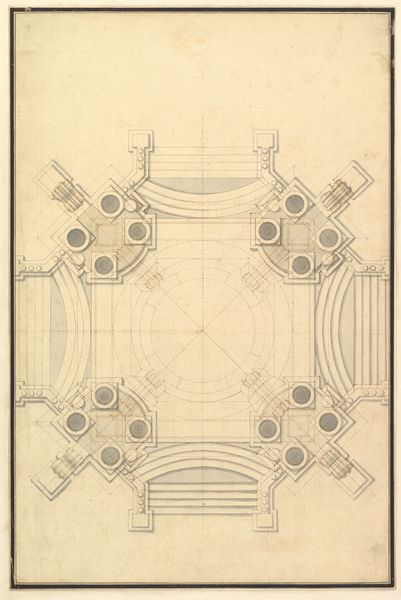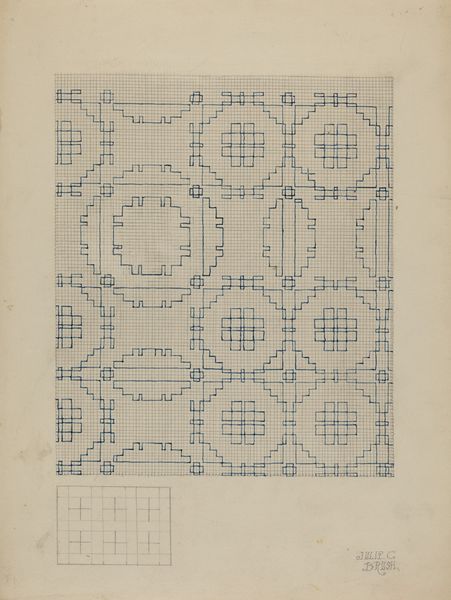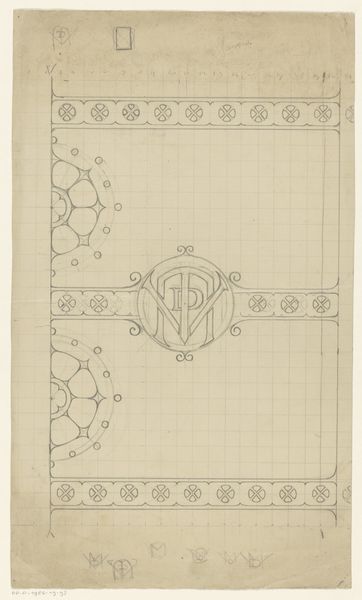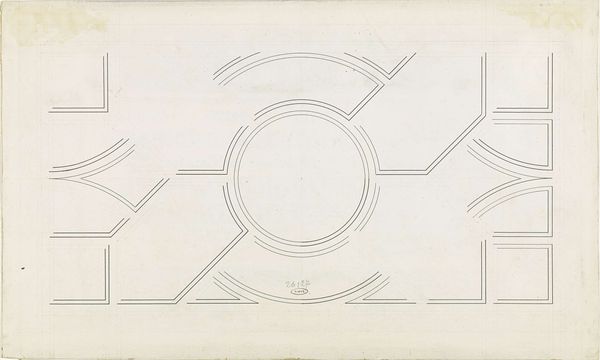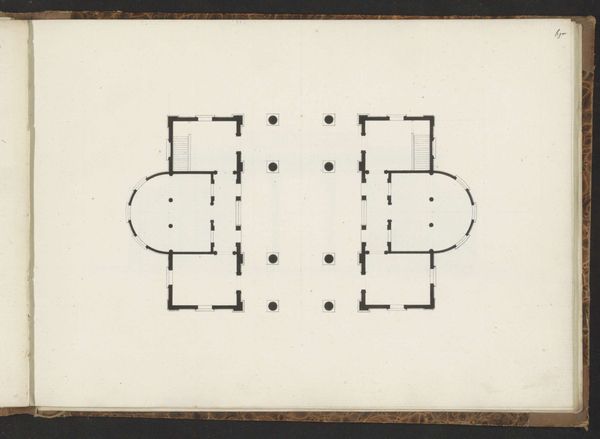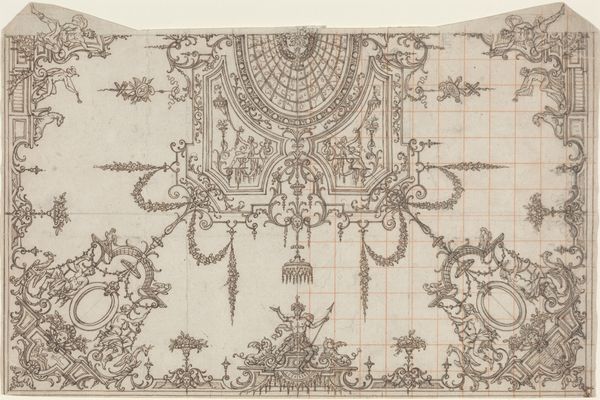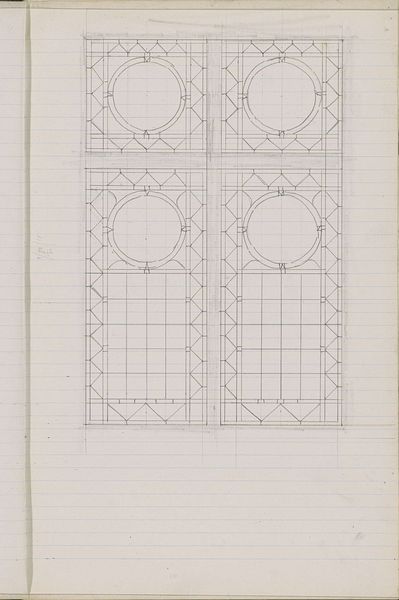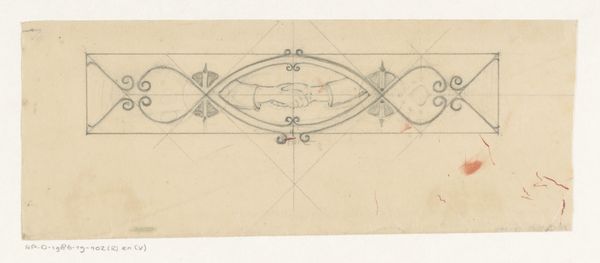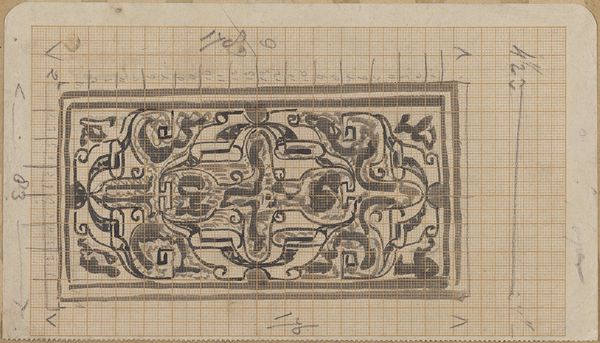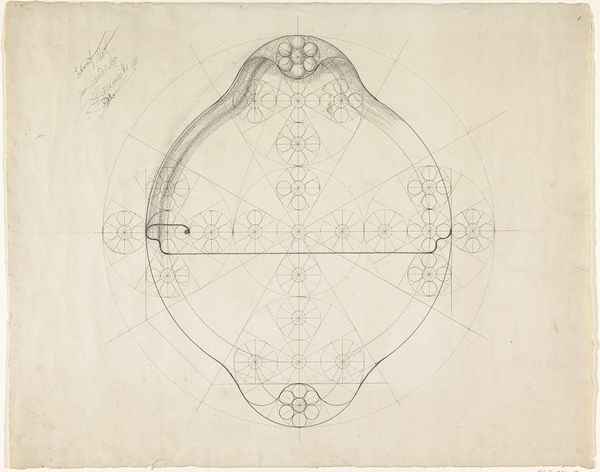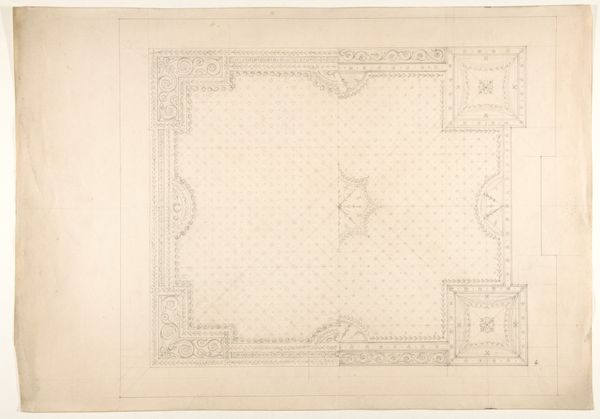
drawing, print
#
drawing
#
type repetition
#
rippled sketch texture
#
aged paper
#
art-nouveau
# print
#
thick colouring
#
old engraving style
#
hand drawn type
#
geometric
#
embossed
#
pattern repetition
#
imprinted textile
#
layered pattern
Dimensions: height 134 mm, width 209 mm
Copyright: Rijks Museum: Open Domain
Curator: This intricate work is simply called "Ornament," a drawing made sometime between 1899 and 1935 by Mathieu Lauweriks. Editor: My first impression? It's intensely ordered. The rigid geometry against that aged paper—it almost feels like staring at an architect's forgotten dream. Curator: Lauweriks was deeply invested in geometric systems, linking them to theosophy and universal harmony. We can see this thinking at play in the repeated patterns. Consider how the rigid grid substructure dictates the placement of each floral-esque motif. Editor: I see it. These aren't just floral elements; they are almost cog-like. The circles within circles and their spiraling emanations create an image suggestive of motion—a cosmic clock, perhaps. It connects to ancient symbolism too, sun wheels and swirling energies. Curator: Exactly. And we can't ignore the social context. Lauweriks was working at a time when ornament was being heavily debated, dismissed by some modernists, embraced by others who sought meaning beyond mere surface decoration. Think of Adolf Loos's famous essay, "Ornament and Crime". Editor: Which makes this piece all the more fascinating. It feels like a defense of ornament, an attempt to imbue it with structure, meaning, even moral weight. It's a clear effort to redeem these images within an era of rapid change and calls for complete stylistic reinvention. Curator: Yes. And while it may seem like a simple decorative drawing, the deliberate application of mathematical ratios seeks a universal language, one far removed from arbitrary whims of style. We can read this work through various intersectional lenses such as those involving architectural reform and debates concerning class structures manifest in visual tastes. Editor: What I appreciate is the sustained resonance—these symbols touch on primal archetypes and ordered, harmonic ideals, retaining their significance regardless of their historical context. From sundials to swirling galaxies, these repeating symbols seem like attempts to tap into universal mysteries. Curator: Thinking about this artwork and Lauweriks’ intentions really gives me a fresh perspective on how design can be used to convey ideologies. Editor: And it highlights how enduring visual symbols can be when married to rigid structure and thought. I find myself looking differently at the decorations around me.
Comments
No comments
Be the first to comment and join the conversation on the ultimate creative platform.
